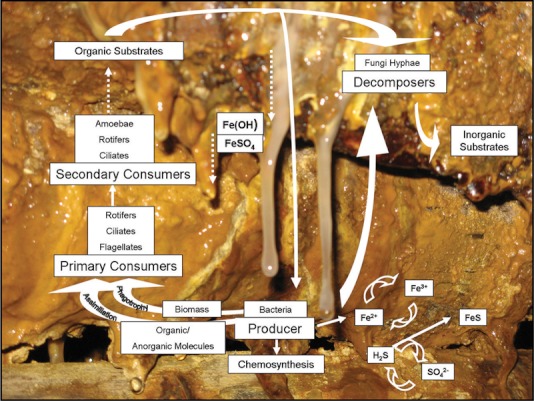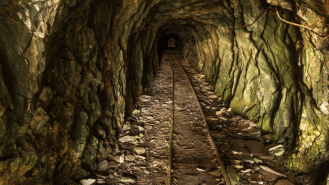Above ground, the picturesque Elbe Sandstone Mountains of southeastern Germany feature remarkable mesas, snaking river canyons, and time-carved rock pillars. An impressive medieval fortress stands tall along the Elbe River. Below ground, the mountains conceal a raw material from which extraordinary power can be unlocked: uranium.
In the 1960s, one pocket of uranium hidden within the mountains was transformed into a productive mine, and the massive element used as fuel for nuclear fission was extracted to the tune of more than 1,000 tonnes per year. But by 1990, the Königstein mine‘s production had fallen off, and much of the mine was flooded as part of a remediation effort to clean up the acidic chemicals used to free the uranium from its earthly prison, as well as to quench any associated radioactive runoff.
Then strange life forms started to move in, prompting the mine’s keepers to call in scientists to analyze the interlopers.
A complex ecosystem forms
What they found would seem positively alien to most of us. In the damp, dark, acidic, uranium-filled environment, biofilms composed of microbes had taken over. Orange acidic “streamers” looking like long, thin worms lazily swayed in the liquid drainage channels. Brown and white stalactite-like slime communities oozed from the ceilings, creating the impression that the walls were melting. In this underground place — literally a radioactive wasteland — life was rampant.

The microbes found in the sludges included not only single-celled bacteria but multi-celled eukaryotes. Researchers from nearby universities in Dresden discovered shape-altering amoebae, squid-like Heterolobosea, stalk-like stramenopiles, multi-appendaged flagellates, many-formed ciliates, and creeping fungi. Bdelloid rotifers 50 micrometers wide and 200 micrometers long were the largest microorganisms seen.
The diverse collection of microscopic life had formed its own ecosystem in the light-deprived underground. In this place — as acidic as soda or grapefruit juice — acid-loving bacteria gain energy from reducing iron and sulfur, forming the slimy stalactites as they proliferate. Tiny eukaryotes like flagellates then feed on these bacteria, which are in turn eaten by bigger ciliates. Amoebae and fungi follow, consuming the smaller microorganisms or decomposing their deceased remains. Much larger rotifers are the apex eaters, consuming both organic detritus and preying on protozoa.

Life finds a way
The eukaryotic bounty and highly developed food chain amazed the researchers. “Eukaryotes colonize to a greater extent extreme habitats as originally thought and are not only present but may play a substantial role in the cycling of carbon within acid mine drainage communities,” they wrote in 2012.
The Königstein uranium mine isn’t the only extreme radioactive environment where more advanced microscopic life has flourished. In 1991, scientists discovered black fungi growing on the walls of the decimated #4 nuclear reactor at Chernobyl. Subsequent analysis of these fungi showed they were likely absorbing radiation and converting it into chemical energy for growth. Life can thrive in some of the most fascinating places.
This excerpt was reprinted with permission of Big Think, where it was originally published.






